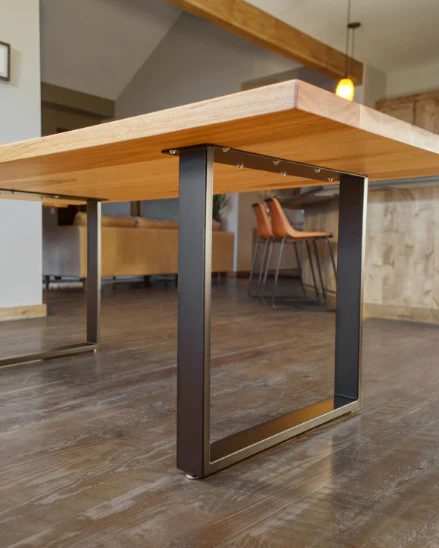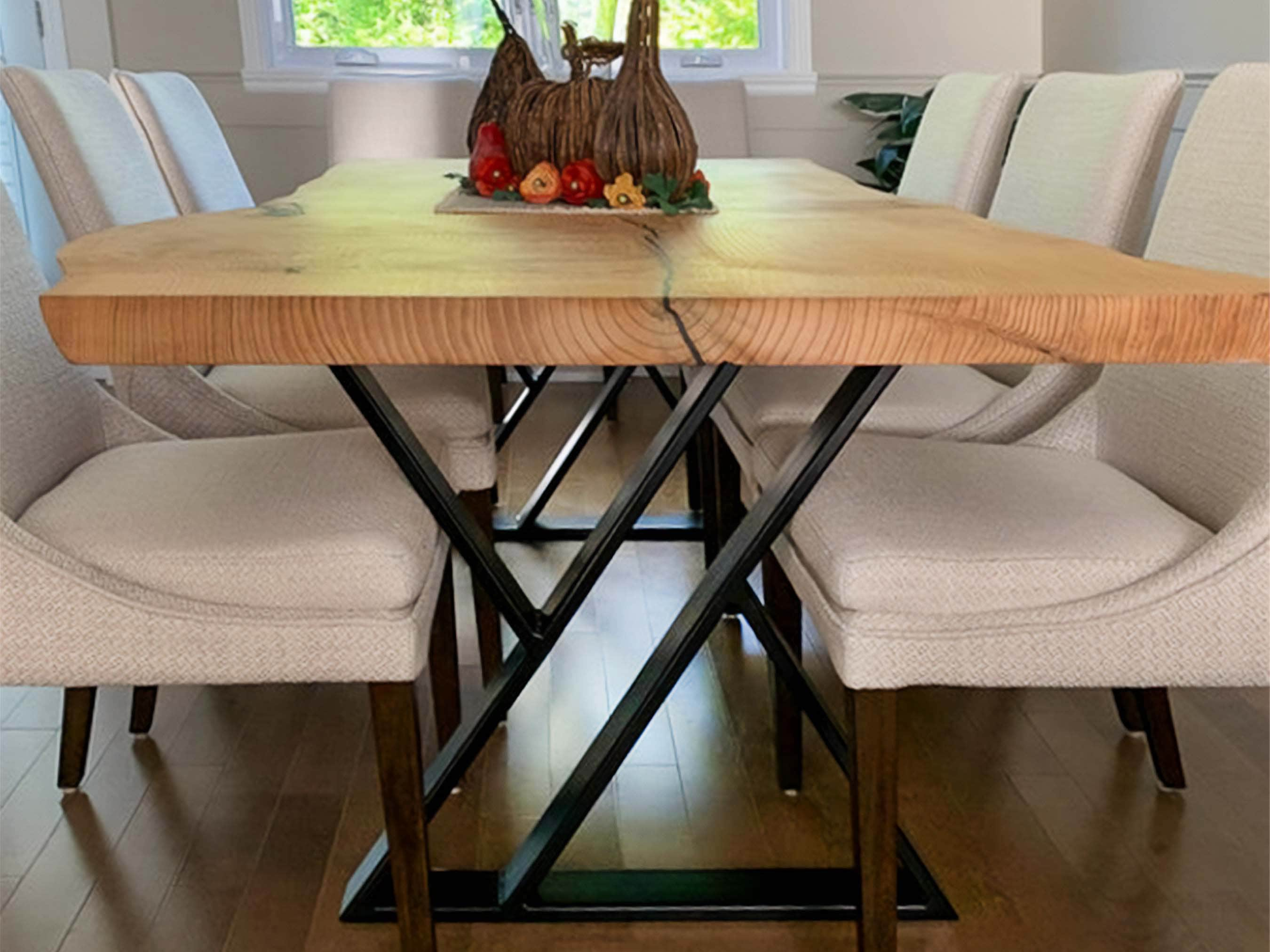How to Maintain and Care for Your Dining Room Table Legs
How to Maintain and Care for Your Dining Room Table Legs
Blog Article
From Conventional to Modern: Find the Perfect Dining-room Table Legs for Your Style
While timeless designs such as cabriole and transformed legs evoke a sense of classic sophistication, modern designs like hairpin and geometric choices offer an opportunity for striking aesthetic passion. As you think about these components, the inquiry continues to be: just how can you perfectly integrate these diverse leg styles to create an unified dining experience?
Recognizing Table Leg Styles
The variety of dining room table leg styles can substantially affect both the aesthetics and functionality of the area. Each leg design adds special aesthetic aspects and functional attributes, dealing with varied layout choices and usage needs. Understanding these designs is crucial for selecting the appropriate eating table that aligns with your overall indoor style vision.
As an example, conical legs supply a tidy, classic appearance that can improve a room's sophistication, while pedestal bases supply security and take full advantage of legroom, making them excellent for smaller sized areas. Hairpin legs, a characteristic of mid-century contemporary style, present an industrial panache, permitting for an airy, open feel. In a similar way, trestle legs evoke rustic charm, supplying durable support and a feeling of timelessness.
Additionally, the choice of products plays a considerable duty. Wood legs can bring warmth and appearance, whereas metal alternatives commonly convey a streamlined, contemporary ambiance. Eventually, understanding table leg styles is crucial for producing a natural dining location that reflects personal design while ensuring functionality and convenience. By thoughtfully thinking about these aspects, you can enhance both the visual and useful allure of your dining room.
Typical Table Leg Options
When selecting dining space table legs, typical alternatives commonly personify timeless elegance and craftsmanship. These designs show an abundant heritage and a dedication to top quality, making them ideal for those who appreciate traditional visual appeals.
One of the most famous standard leg designs is the cabriole leg, identified by its elegant bent form. This style often features decorative makings and is most commonly located in Queen Anne and Chippendale furniture. Another popular option is the transformed leg, which boasts a collection of smooth, rounded forms that supply a traditional look while maintaining security.
Furthermore, the straight leg, while simple, offers a tough and basic structure that can blend seamlessly with a variety of tabletop styles. For those drawn to ornate describing, claw-and-ball feet legs stimulate a sense of splendour and can serve as a sensational prime focus in any type of dining room.
Lastly, pedestal bases, although not purely legs, supply an alternate conventional alternative that permits for adequate legroom and can be wonderfully carved. Each of these typical leg styles adds to the total ambiance of a dining area, marrying feature with aesthetic appeal.

Modern Table Leg Layouts
Modern table leg layouts use a varied variety of designs that stress tidy lines and innovative products. These layouts usually prioritize performance while functioning as striking prime focus within a dining room. Minimalist visual appeals prevail, with legs crafted from materials such as metal, glass, and engineered timber, which add to a airy and contemporary feel.
One popular design is the barrette leg, identified by its slim, tapered structure that provides security without frustrating the table top (dining room table legs). This style is often discovered in mid-century modern furnishings and can effortlessly enhance various eating table forms. An additional pattern is using geometric forms, where legs might handle asymmetrical or angular forms, including visual interest and a touch of creativity

Blending Designs for Distinct Areas
Usually, property owners look for to produce distinct eating rooms that mirror their personal style by mixing various style components. This method permits the consolidation of varied appearances, causing an unified yet distinctive environment. As an example, matching a rustic wooden table with sleek, modern-day steel legs can develop an appealing contrast that elevates the area's total allure.
Furthermore, incorporating vintage table legs with contemporary tabletops can evoke a sense of background while preserving a modern sensibility. Such combinations not just showcase individual taste however additionally encourage imagination, permitting home owners to curate an area that feels both individual and welcoming.
Color plays a crucial role in this blending process; choosing table legs that complement or comparison with the existing shade plan can improve visual interest. For instance, whitewashed legs can soften the daring of a dark table surface area, creating a balanced visual.
Tips for Picking the Right Legs
Picking the right table legs is essential for accomplishing both performance and visual allure in your dining area. Begin by thinking about the general design of your area. Typical settings gain from legs that include complex carvings or turned layouts, while contemporary areas may call for streamlined, minimal designs.
Next, examine the height and security of the legs. dining room table legs. Typical eating tables range between 28 to 30 inches in height, so make certain the legs complement this dimension for convenience. Additionally, durable materials, such as hardwood or steel, can boost security and long life
Evaluate the leg shape as well-- options include right, click for more tapered, or stand layouts. Straight legs supply a timeless appearance, while conical legs can include a touch anonymous of elegance. Pedestal bases supply ample legroom and are suitable for smaller sized spaces.
Conclusion
In recap, picking the excellent dining-room table legs calls for careful factor to consider of both standard and modern-day designs. Conventional choices such as cabriole and turned legs offer classic sophistication, while modern-day designs like barrette and geometric forms supply a contemporary touch. By integrating leg design, elevation, and product with the general decor, a cohesive and welcoming atmosphere can be achieved. Ultimately, the chosen table legs must mirror the preferred aesthetic, enhancing the dining experience within the area.
The variety of dining area table leg styles can substantially affect both the aesthetic appeals and functionality of the room. Inevitably, recognizing table leg styles is essential for producing a natural dining area that mirrors individual style while guaranteeing usefulness and convenience.One of the most legendary traditional leg designs is the cabriole leg, identified by its stylish bent form. Straight legs provide a classic look, while conical legs can add a touch of sophistication.In summary, picking the suitable dining room table legs calls for mindful consideration of both contemporary and standard designs.
Report this page